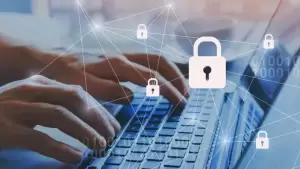Cybersecurity Best Practices
Protecting Your Data and Systems in an Evolving Threat Landscape
In our growing digital environment, cybersecurity is critical. Working from home, cloud computing, and the Internet of Things (IoT) have increased cybercriminals’ attack surface, making individuals and organizations more vulnerable to cyber threats than ever before. To protect yourself against these dangers, it’s critical to understand the most recent cybersecurity threats and implement best practices to safeguard your systems and information. In this in-depth primer, we’ll look at the present-day cybersecurity landscape, the most significant threats, and practical suggestions for keeping your digital world safe.
Understanding Today’s Cybersecurity Landscape
The Changing Threat Environment
Cybersecurity threats are growing all the time, getting more sophisticated and challenging to detect. Arguably the most noteworthy dangers in recent years have been:
- Ransomware Attacks : Malware is harmful software that encodes your data and holds it prisoner until you pay the perpetrators a ransom. Ransomware outbreaks such as WannaCry and NotPetya have caused widespread inconvenience and financial losses.
- Phishing Scams: Phishing includes duping someone into disclosing confidential data, such as login passwords or bank information. To fool victims, cybercriminals frequently imitate trusted businesses via emails or websites.
- Data Breach : Major data breaches, such as those at Equifax and Yahoo, have provided sensitive information to hackers, including financial and personal data.
- IoT Vulnerabilities : As more electronics become interconnected, cybercriminals have found IoT gadgets to be appealing targets. Poorly protected smart devices can be used to gain access to residential or corporate networks.
- Supply Network Attacks : Cybercriminals are increasingly targeting software supply chains in order to implant ransomware or additional malware into popular programs.

Human Factors
It is critical to remember that the human component is important in cybersecurity. To obtain access to systems, cybercriminals frequently use human flaws such as fascination, trust, or ignorance. Pretexting and baiting are common social engineering tactics used to trick people into disclosing information or taking activities that undermine security.
Individuals’ Practical Advice
IT personnel and businesses are not primarily responsible for cybersecurity. Individuals may safeguard their data as well as personal information by taking proactive measures.
1. Multi-Factor Authentication (MFA) and Strong Passwords
Passwords are frequently used as the starting point of defense against cyber-attacks. It is critical to have secure and unique passwords for every single one of your online accounts. To safely generate and store complicated passwords, consider utilizing a reliable password manager. These programs will assist you to maintain a list of your passwords and fill them in automatically when necessary.
Implement multi-factor authentication (MFA) whenever possible. MFA increases security by asking you to submit two or more sources of identification, including everything that is known (password), everything you own (a mobile device), or a proof that you are (biometrics such as fingerprints or facial identification).
2. Email Safety
Email is a prevalent vector for cyberattacks, particularly phishing. Phishing emails attempt to dupe users into disclosing sensitive data or clicking on dangerous links. Here are some tips to improve your email security:
– Be wary of unsolicited emails, particularly those asking for sensitive data or financial transactions.
– Prior to going on any of the links or downloading anything, double-check the sender’s email address. Cybercriminals frequently utilize email addresses that look like those of legal businesses.
– Activate spam filters to decrease the number of scam emails that reach your mailbox
3. Software Update
Software updates, often known as patches, are essential for keeping your gadgets and applications secure. Cybersecurity fixes that address recognized weaknesses are frequently included in updates. Failure to update software exposes your systems to potential attacks. Here are some examples of best practices:
– Upgrade your operating system, programs, and applications regularly. The majority of contemporary operating systems and programs include updates automatically, which you should activate.
– Watch for updates from dependable software manufacturers, and install them right away.
– If you use your smartphone or tablet, make sure to routinely update your apps. Targeting obsolete applications with known vulnerabilities is a common practice for cybercriminals.
4. Privacy on Social Media
Unaware of the possible security hazards, many people disclose a variety of private data on social networking platforms. You can prevent your private data from getting into unauthorized hands by adjusting the privacy settings on your social media accounts. What you may do is:- Review and modify your social media profiles’ privacy settings. Reduce the amount of private data that is accessible to the public.
– Review and modify your social media profiles’ privacy settings. Reduce the amount of private data that is accessible to the public.
– Be cautious when revealing private information on social media sites, including your location or phone number. These details could be used by cybercriminals in social engineering schemes or to access your accounts without authorization.
5. Safe Browsing
You may come into contact with dangerous websites and downloads when browsing the internet. Think about the following when browsing securely:
– Use trustworthy anti-malware and antivirus programs to fend off nefarious downloads and websites. These safety devices can offer immediate defense against recognized dangers.
Only download programs and software from reputable websites, such as the Apple App Store, Google Play Store, or the official websites of software developers. Stay away from unauthorized or pirated software since it frequently contains malware.

Business Best Practices
Businesses confront significant cybersecurity problems, especially when it comes to safeguarding sensitive company information and customer data. The following are fundamental corporate best practices:
1. Employee Education
The human factor is one of the biggest cybersecurity threats for enterprises. Employees may unintentionally undermine security by clicking on links that are phishing or disregarding security procedures. Businesses should:
– Train all personnel, from beginning employees to top executives, in cybersecurity awareness. Make su- Hold frequent phishing awareness training sessions to evaluate and enhance staff members’ comprehension of phishing scams. These exercises can contribute to the development of a cybersecurity awareness culture.
2. Network Security
A solid network security system is essential for safeguarding the digital assets of your company. The following are some best practices for network security:
– Use an intrusion detection system and firewall to monitor and safeguard your network. Between your computer system and the external world, firewalls serve as a barrier, and systems for intrusion detection can warn you of questionable activity.
– Frequently audit the security of your network to find and fix flaws. You can identify weak places in the system and take precautions to strengthen them with the use of vulnerability assessments.
3. Data Security
A critical component of safeguarding sensitive information is data encryption. Data encryption helps prevent intrusion both while it is in transit (during transmission across devices) and at rest (during storage on devices or servers). To prioritize data encryption, follow these steps:
– Use robust encryption techniques to encrypt sensitive data. Make sure that data is secured even when it is kept on cloud servers or in databases.
– Give encryption for customer information, financial information, and intellectual property first priority. Recognize the local and industry-specific regulatory and legal requirements for data encryption.
The increase in remote employment has created new cybersecurity difficulties. Businesses are required to give employees secure access to corporate data and resources while they are working remotely. To accomplish this:
– Create secure working from home policies outlining the conditions for remote access to corporate networks and data.
– To encrypt remote communications, use virtual private networks (VPNs). By establishing an encrypted, safe connection between the remote machine and the corporate network via a VPN, attackers have a harder time intercepting data.
– Verify that remote workers have access to the security tools they need, such as firewalls and antivirus software, and that these resources are maintained.
– Use effective remote access authentication techniques, such as MFA, to guarantee that only authorised personnel have access to business systems and data.

Response to Incidents and Recovery
No company is safe from cyberattacks. Even with effective cybersecurity safeguards, breaches can still happen. In order to reduce damage and recovery time, it is essential to have a clear incident response plan. Here’s how to create a successful plan:
– Create an incident reaction team with roles and tasks that are well-defined. Senior management, legal, IT, and public relations representatives should be on this team.
– Create a thorough incident response strategy that describes what you do in the event of a cybersecurity problem. Detecting the attack, containing it, eliminating the danger, and recovering the compromised systems should all be covered by the plan.
– To evaluate the incident response plan and make sure that everyone on the team is aware of their roles and responsibilities, conduct tabletop exercises.
– Establish communication procedures for alerting necessary parties, such as staff members, clients, and regulatory agencies.
Backup and Restoration
Having safe and current backups is frequently the quickest approach to retrieve crucial data and systems in the case of a cyberattack. Take into account these ideal backup and recovery procedures:
– Continually backup important data and systems, and store backup copies offsite in safe spaces. Backup consistency can be helped by using automated backup systems.
– To make sure your recovery and backup procedures are functioning as intended, test them. To ensure the information can be effectively restored, this involves testing both the backup and recovery processes.
– By keeping secure backups, you can be ready for ransomware assaults. Your data may be encrypted by ransomware, rendering it unavailable unless the ransom is paid. You may restore your data using secure backups without giving in to an attacker’s demands.

Conclusion:
Cybersecurity is a continual commitment in a time when threats are continuous and always changing. Individuals and companies can greatly improve their cybersecurity posture by comprehending the present threat landscape and putting these useful advice and best practices into practice.
The greatest way to prevent cyberattacks is to practice proactive cybersecurity. A preventive strategy for cybersecurity is crucial to remain ahead of changing threats, whether you’re an individual safeguarding your privacy or a corporation preserving critical data.
Everyone is accountable for cybersecurity in the digital environment we live in. We can all help create a more secure online setting for ourselves and our businesses by adhering to best practices, remaining educated about the most recent dangers, and constantly enhancing our cybersecurity safeguards.
We can all contribute together to making the digital world safer by implementing these best practices and exercising caution, one safe connection at a time.
About Us







